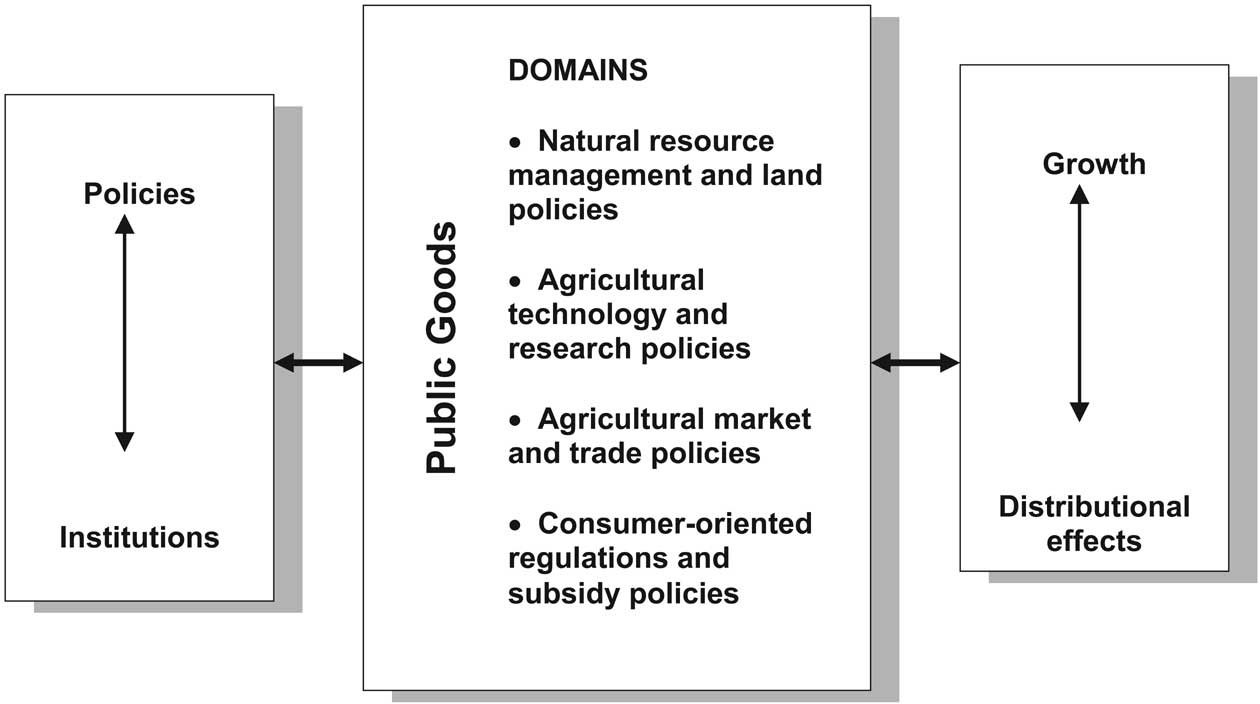1999). However, increasing productivity is not enough to decrease poverty (Palmer-Jones and Sen, 2006). There are other factors that can affect poverty which are not affected by the increase in productivity, such as the distribution of the income, the adoption of the technology or the suitability of the technology for the rural community. In addition, increased food supply does not automatically mean increased food security for all. What is important is who produces the food, who has access to the technology and knowledge to produce it, and who has the purchasing power to acquire it (Pretty and Hine, 2001). Sub-Saharan Africa has experienced growth in the agricultural sector (FAO, 2005b); additional analysis is needed to understand who has benefited from this growth, and why this growth did not translate into increased food security.
There is no agreement in the literature as to what kind of technologies would have the biggest impact on the reduction of hunger and poverty. While some authors agree that the main problem is not the technology itself, but the access of the poor to new technologies, others would argue that the problem is that the technologies developed are not pro-poor, and benefit only the wealthier farmers. Often, poor farmers do not have access to the technologies and do not participate in the decision process on technologies. Thus the research process ignores farmers' knowledge and experience even though they may offer insights that could help identify and/or develop effective technologies for unfavorable areas. For that reason the technologies developed may increase productivity but this may not be their main objective. Such systems may perpetuate a sense of helplessness among resource-poor farmers as they wait for effective technological solutions. Recently, some explicit efforts are being made to include farmers' needs in the R&D agenda. All actors seem to agree that participatory approaches are needed; participatory plant breeding seems to be promising (Almekinders and Eling, 2001). What remains unclear is what role the industry would play in this democratization process.
The poverty reduction effect can be substantial and it is free, in the sense that R&D has already paid for itself, whereas redistribution can be counterproductive due to its negative effects on growth (Thirtle et al., 2003). A long-run view of technological change must take into account the distributional effects of agricultural research investments. These research investments go beyond technology and include institutional innovations and the structure of the innovation system catering to agriculture. The distributional impact of technological change ultimately depends on the particular context of policies, markets, and institutions and on interregional connectedness through infrastructure (von Braun, 2003) (Figure 8-8). Adoption of technologies and success depends on many factors, e.g., land ownership, access to water, and availability and efficient use of diverse plant genetic resources (von Braun, 2003). This is in line with the argument that at the farm level, prices, access to inputs and resources, credit and markets, education levels and the distribution of land, affect both the rate of uptake of improved technologies and the extent to which they benefit the poor (Hazell, 1999). Improved technologies may fail to benefit poor farmers, not because they are inherently biased against the poor, but because the distribution of land, or

Figure 8-8. The conditioning of agricultural growth and distributional effects. Source: Von Braun, 2003
access to resources and markets is inequitable. When these are taken into account it becomes possible to explain why similar technologies can have very different impacts on the poor in different regions, or at different times.
Research needs to focus on commodities used by poor people, and on areas where the poor are concentrated (rain fed highlands, semiarid tropics and marginal lands) (Guna-sena, 2003). Without adequate investment in infrastructure, technology and human development in these areas, conditions are likely to deteriorate further. Technologies likely to succeed in these areas include mixed farming systems—livestock and agroforestry, improved fallows, and cover crops (Gunasena, 2003). In all cases marketing institutions need to be developed to support the small-scale farmers.
Although less controversial than biotechnology, low-external-input agriculture (LEIA) is also the subject of considerable disagreement (DIFD, 2004). Debate on the relevance of these technologies is unfortunately often clouded by ideology. A dataset containing information on 208 cases from 52 developing countries show that in these projects and initiatives, about 9 million farmers have adopted sustainable agriculture practices and technologies on 29 million hectares (Pretty and Hine, 2001). This demonstrates that sustainable agriculture can reduce food poverty through (1) appropriate technology adapted by farmers' experimentation; (2) a social learning and participatory approach between projects and farmers; (3) good linkages between projects/initiatives and external agencies, together with the existence of working partnerships between agencies; (4) presence of social capital at local level. A variety of options are available to increase the returns to families from their production, either by reducing losses to pests (better storage and treatment) and inefficient processes (e.g., fuel-saving stoves); or by adding value before sale or use (conversion of primary products through processing). Adding value through direct or organized marketing may involve improvements to physical infrastructure (e.g., roads, transport); or through direct marketing and sales to consumers (thus cutting out wholesalers and "middlemen").
Other aspects that need attention are the effects of the crop technology adoption on gender, for example, in the distribution of work roles in the cropping (Von Braun and Webb, 1989) and the significant spatial dependence on